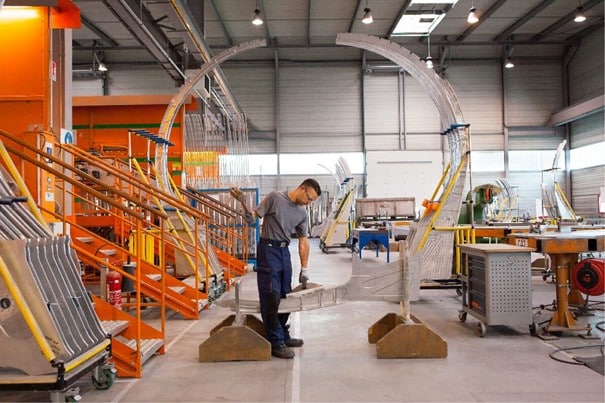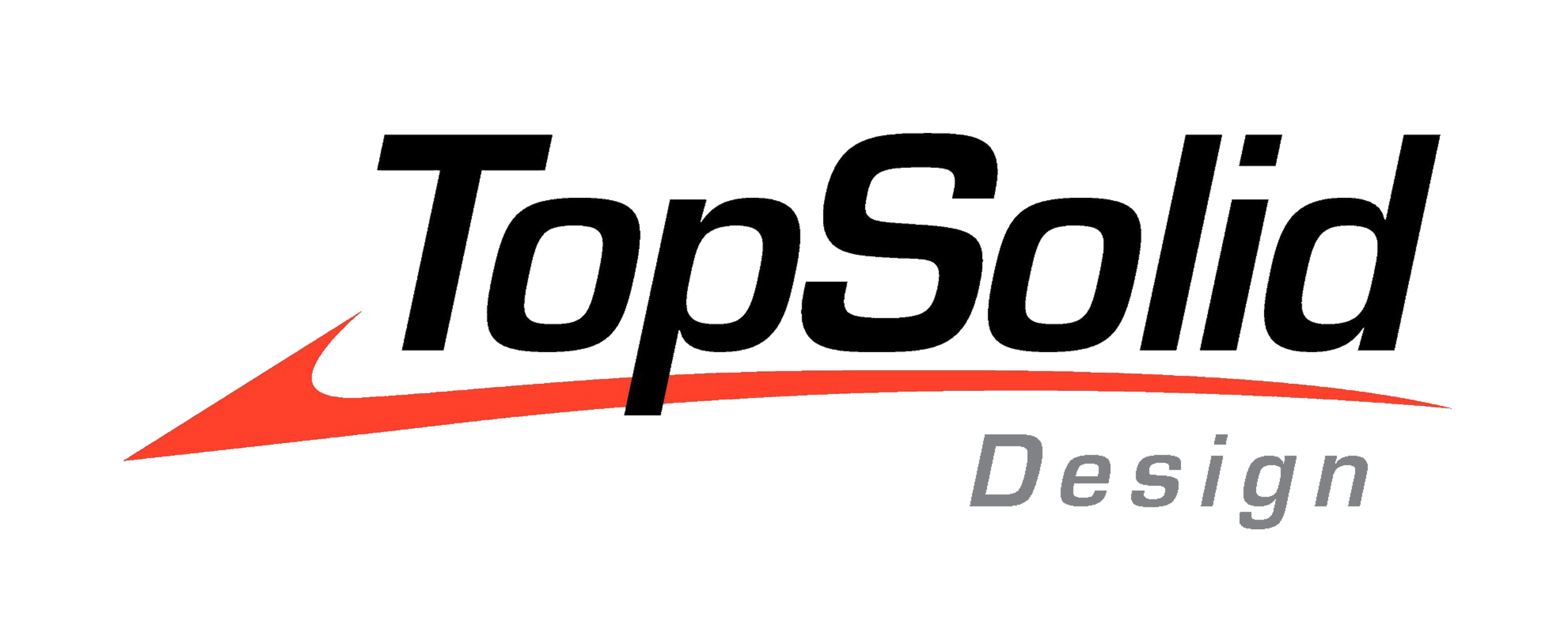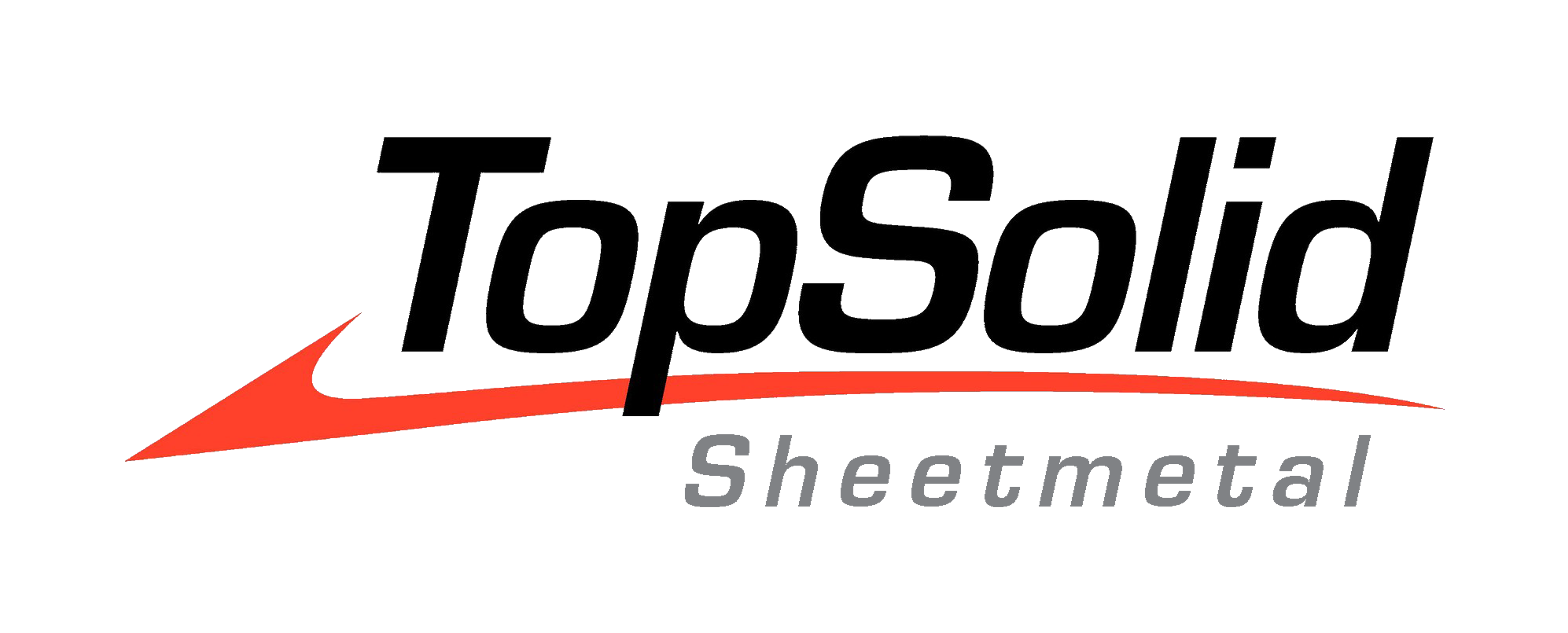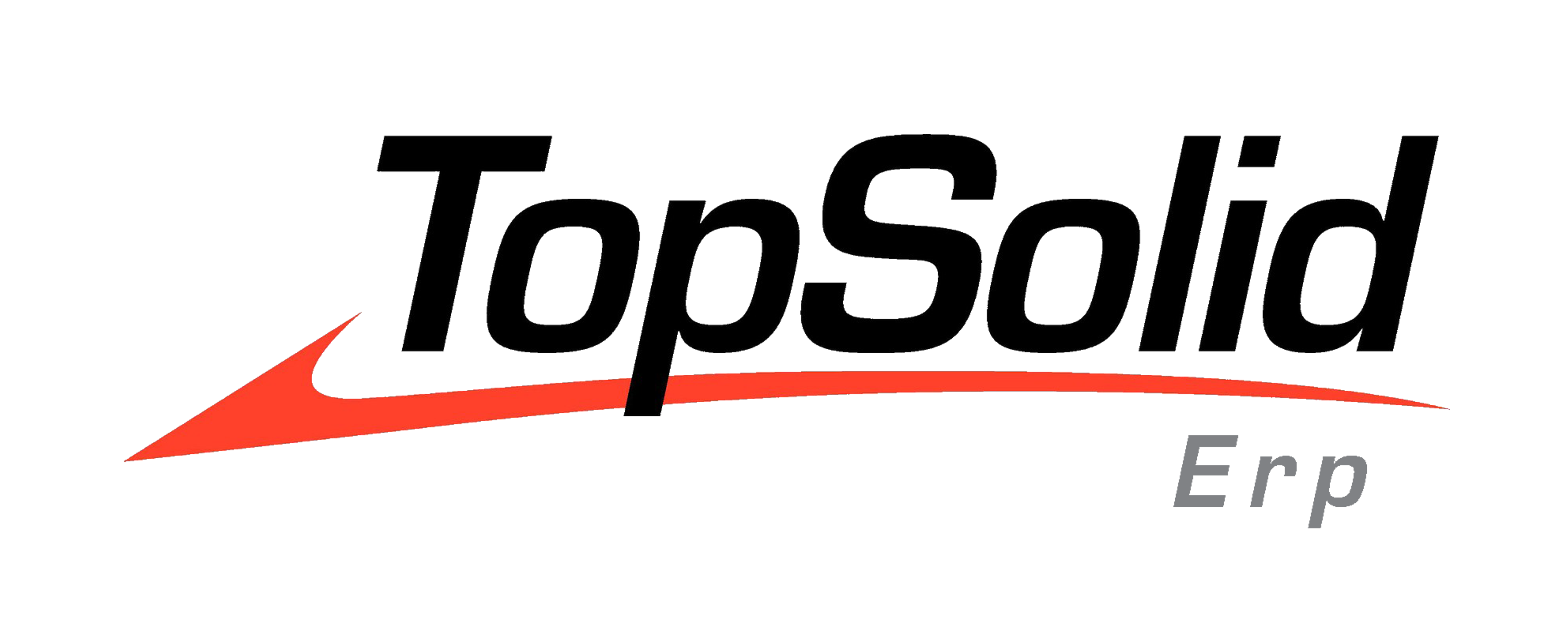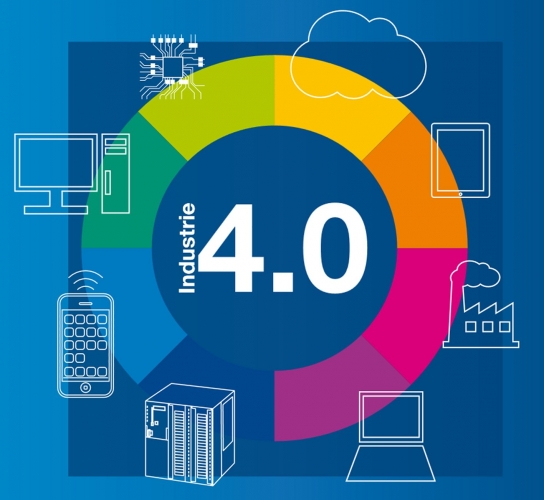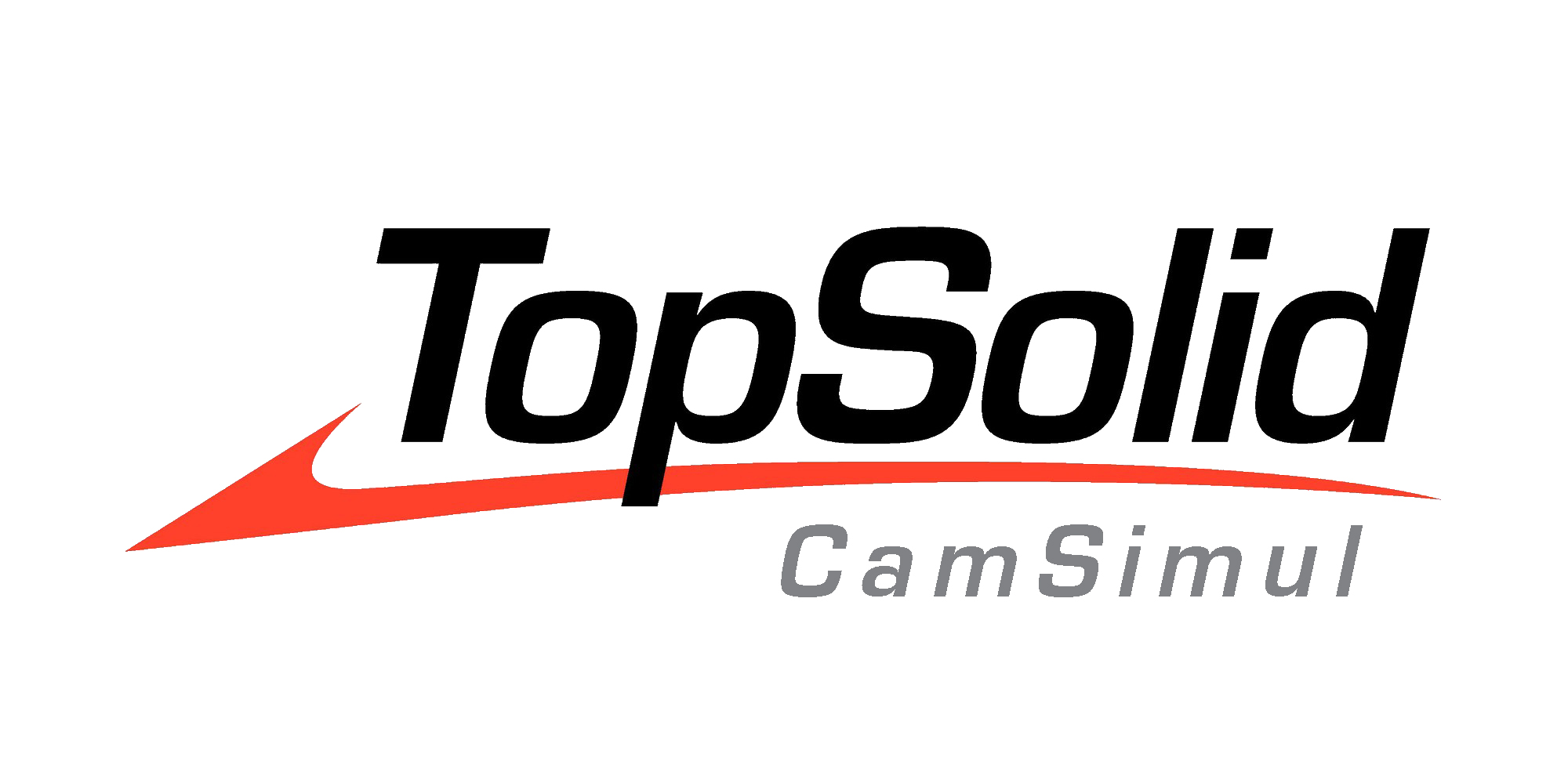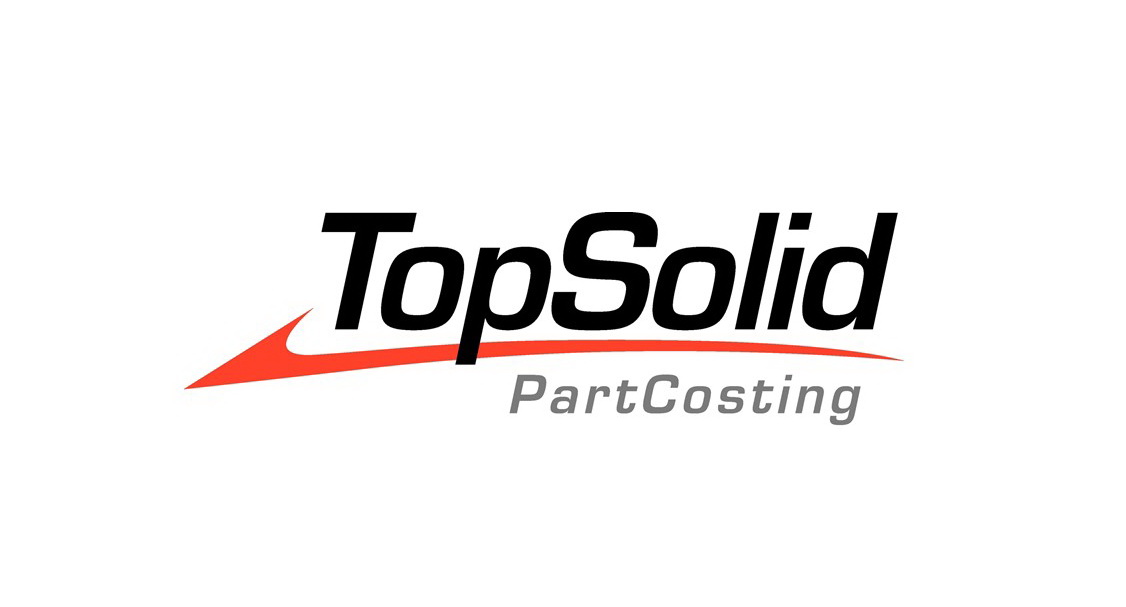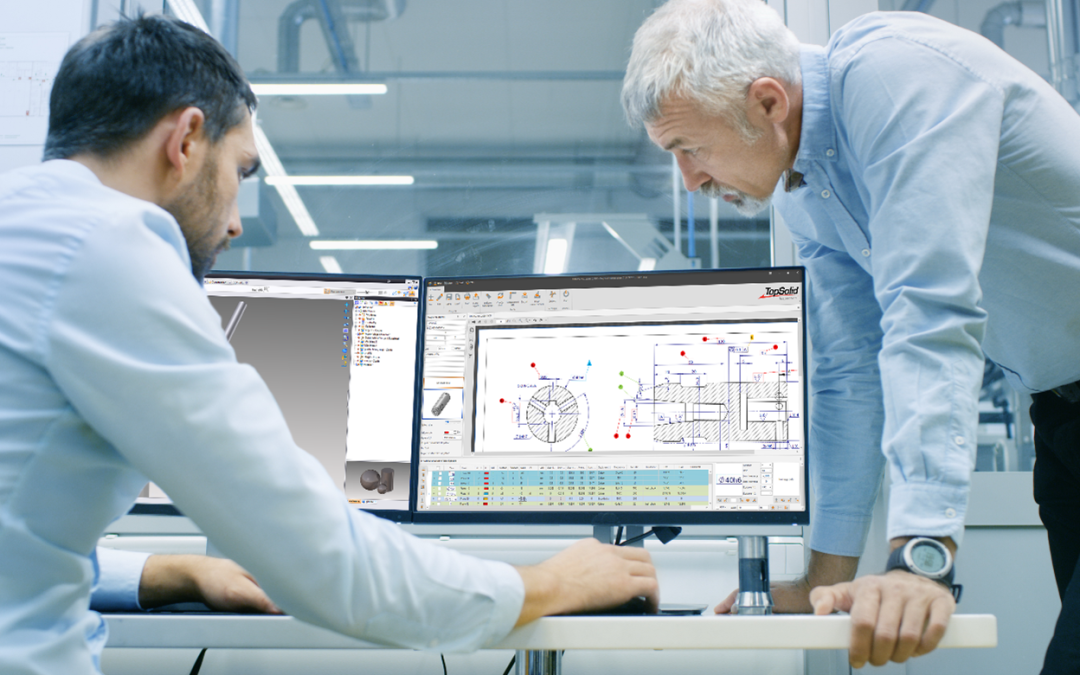
TopSolid’Inspection: automated quality inspections you can trust
With production lines under serious pressure, in a context marked by increasingly strict regulatory traceability requirements, quality inspection has a key role to play. Not least because every part has to satisfy ever more stringent standards, and the slightest non-conformity can lead to significant costs at all levels: scrapped parts, late delivery, unhappy customers, and so on.
Yet, despite the context, many companies still rely on manual inspection practices. Printouts of drawings with handwritten notes, paper versions of measurement records, time-consuming data processing in Excel… In short, a set of methods that are not interlinked, take up a lot of time and multiply the risk of human error.
That’s where TopSolid’Inspection comes in. Now a benchmark solution, this digital tool centralises all your dimensional inspection operations securely, ushering in a radically new approach to workshop quality inspections.
Why dimensional inspection is still a critical (and time-consuming) operation
The complexity of modern quality inspections poses a real challenge: increasingly complicated technical drawings go hand in hand with sophisticated parts that require tolerances in micrometers. On top of that, in sectors such as aviation and the automotive industry, customer requirements impose extremely high standards in terms of rigour and traceability.
In this context, relying on human interpretation of drawings is a real bottleneck for everyone involved in production chains. Quality inspectors have the hardest time, because they have to identify each dimension to be measured, make a note of nominal values and tolerances, then organise their measuring sequences.
Without a digital tool, this phase is time-consuming as well as being a source of errors. Yet the stakes are high: reading the wrong dimension or applying the wrong tolerance can undermine the entire quality inspection process!
At the same time, being able to trace your measurements is another major advantage. Who inspected the part? When? And which instrument did they use? This is all essential information for customer audits, or if non-conformities come to light. And yet, you often won’t find all that information in one place. A confusing mix of Excel files and logbooks (sometimes physical) makes it unreliable and difficult to use.
Lastly, having lots of different files, and no link to ERP or CAPM systems, makes overall production management more complicated, because your quality data remains separate — a real shame for management teams who don’t then have access to valuable information about manufacturing trends, equipment performance, and so on.
Related topic – How to save time in the inspection process for mechanical parts
TopSolid’Inspection: an inspection solution geared to production
Automatic ballooning and dimension recognition
TopSolid’Inspection revolutionises the inspection preparation process by allowing you to integrate the part drawing into the planned inspection directly, whatever its format (PDF, DXF, DWG, image scan, TIFF file, etc.). That flexibility guarantees perfect compatibility with your current practices.
The system is essentially based on manual or automatic dimension ballooning using recognition algorithms. That feature saves you a huge amount of time, especially when it comes to complex drawings with lots of different dimensions.
How does it work? Put simply, automation is the key. On the one hand, built-in OCR (optical character recognition) reads the values of dimensions. On the other hand, the system generates the inspection frequency and tolerances based on defined standards, and precisely locates every point to be measured on the drawing.
Customisable generations and straightforward use
After ballooning, TopSolid’Inspection uses automation again to generate your work documents (balloon drawing for the workshop and inspection sheet for entering the measurements). Those documents can be exported in all standard formats (Excel, Word, PDF) so they fit seamlessly into current processes.
As a side note, all visual settings can be configured to match the specific needs of each organisation. Companies can even adapt generation models to their own corporate style guide and in-house standards (inspection reports, self-inspection sheets, FAI folders, and so on).
A Factory 4.0 workshop interface, making sure TopSolid’Inspection fits seamlessly into your workshop
The major innovation of TopSolid’Inspection lies in its simplified version, specially designed for workshops. Deployed on Windows devices (in a 100% digital environment), the interface can be used directly by quality inspectors at their workstation.
They can enter measurements manually using a touch keyboard, or automatically via measuring instruments connected to the tool. The system applies a smart management approach, also integrating management of production phases, resulting in a sequence-based inspection suited to manufacturing process sheets.
As well as noticeably speeding up the inspection process, that direct connectivity makes transcription errors a thing of the past. Lastly, dynamic inspection charts give you the option of observing trends in real time, so you immediately notice the first signs of drift.
In short, the interface is designed to be compact, without cutting any corners when it comes to the precision and reliability of quality inspections!
Centralised, fully traceable data
To make sure all your quality information is consistent and in one place, TopSolid’Inspection centralises it in a single database which is easy to integrate into your legacy ERP or CAPM. It’s also worth noting that the system accepts a variety of data sources, which makes it easier for companies to navigate the digital transition, whatever stage they’re at.
Each measurement is automatically associated with its inspector, the instrument used and the date and time of the operation. The multi-criteria search function also lets you retrieve the information you need in a click: specific project, customer, inspection device, etc.
Quality and capability analysis
TopSolid’Inspection doesn’t just collect data, it provides you with powerful statistical process control tools.
- Inspection charts containing measurements or attributes give you an overview of trends and let you detect any signs of drift (they alert you automatically).
- Capability calculations (Cp, Cpk, etc.) quantify process performance and help you determine improvement actions.
You may have cause to analyse a particular project or set of projects to make comparative studies and identify best practice. Those features are particularly helpful for conducting customer audits and for continuous improvement.
Related topic – What are the advantages of digitising the part inspection process?
What are the benefits for your quality department?
Adopting TopSolid’Inspection generates some instant, measurable benefits for your workshop. You can say goodbye to tedious ballooning operations, and you won’t have to spend time transcribing and formatting reports. That means quality inspectors can focus on their core business — measuring and analysing — with fewer human errors (due to transcription, interpretation, etc.) as an added bonus.
Don’t forget that full traceability is also one of the requirements of ISO-certified environments, as well as making customer audits so much easier. All of those improvements boost companies’ credibility along with customer confidence.
Finally, the fact that the tool fits seamlessly into the TopSolid ecosystem creates a powerful synergy. Manufacturing process sheets are produced directly from design data, while quality findings make for more sophisticated production control.
TopSolid’Inspection radically transforms your approach to quality inspection, by simplifying tasks everyone knows are tedious and error-prone. This smart use of digitisation gives your teams the chance to focus on their true added value — a strategic asset that secures your production and promotes your quality approach, impressing even the most demanding customers.
Find out how TopSolid’Inspection can transform the way you manage dimensional inspections. Contact us for a personalised demo!

